 Welcome to the SBBN entry for this year’s White Elephant Blogathon!
Welcome to the SBBN entry for this year’s White Elephant Blogathon!
How the White Elephant Blogathon works: Everyone showing interest gives Paul of Silly Hats Only a bad (or “bad” or “interesting”) film, and he randomly hands them out to participants, who are then surprised or delighted or nauseated by the film they’ve been given. They then blog about it on April Fool’s, though this year there is a little buffer of a few days, so check in at Silly Hats Only in a few days to see all the contributors.
***
This year I received the tepid, flavorless, flat soft drink of a film Same Time, Next Year (1978). It’s a film I had seen before and never expected to see again. I am not glad I saw it again. I am, in fact, a bit irritated that I have spent this much time talking about a film that has no merit or usefulness whatsoever, though if pressed I would admit that a canister of the 35mm print of the film could be used effectively as a doorstop, or to prop up a wonky coffee table leg, so that’s something. And I’m also pretty pleased with the amount of organizing and cleaning I got done in my office while procrastinating, hoping the world would end or at least a meteor would hit my house, anything, just so I didn’t have to think about this fucking film again.
Based on the hit 1976 Broadway play which starred Ellen Burstyn and Charles Grodin [! -ed.], this 1978 cinematic version replaces Grodin with Alan Alda [!! -ed.] and is therefore a failure right out of the gate. The changes made to the play to make it allegedly more palatable to cinematic audiences ruin what must have been a fine Broadway production. I am assuming a bit on this, having never seen the stage play, what with being a toddler during its run and all. Still, comparing Act I Scene I from the script, excerpted here at Sheila O’Malley’s blog, with the opening of the film, one gets a clear picture of how compromises and changes affected the overall concept of Same Time, Next Year, and not for the better.
Same Time, Next Year concerns two vacationers, George (Alan Alda) and Doris (Ellen Burstyn) who meet at a California getaway in 1951 and have a one night stand. We don’t see them meet each other in the play, which opens with them in bed together. The film waters this down, giving us dialogue-free scenes underneath the credits, showing them seeing each other across a crowded lunch room, then spending the day together talking and bonding, so that when the credits end, then they’re in bed together. They are alternately excited at having found someone they obviously have a deep connection with and in a panic because both are married to other people. They decide — we assume, we are not directly told this — to meet at the same California cabin on the same day the next year to pick up where they left off. Thus their affair continues for 26 years, and we join them every five years or so, beginning in 1951.
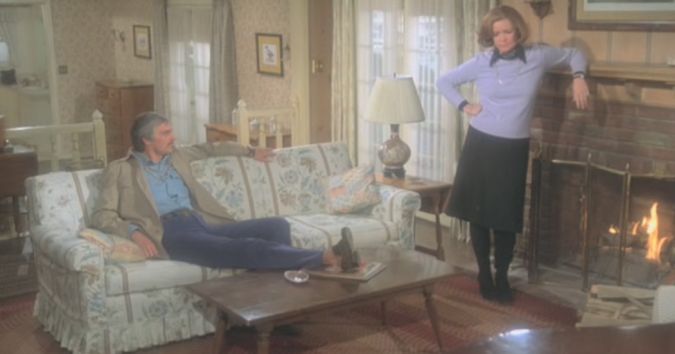 The next person to claim that My Dinner With Andre is the most boring film ever will wake up to discover their bedroom papered with hundreds of printouts of this screencap.
The next person to claim that My Dinner With Andre is the most boring film ever will wake up to discover their bedroom papered with hundreds of printouts of this screencap.
This film unfortunately comes in the midst of Alan Alda’s sanctimonious period, and though he tries hard not to, he slips into Hawkeye Pierce mode throughout much of the film. Both Alda and Burstyn are heavily mannered, neither making any attempt to render the dialogue realistic. Some of this is the result of clumsy overdubbing, though much of the problem lays with the methods they use to make themselves look younger in the earlier scenes and older the later ones. Burstyn, who was by all accounts revelatory in the stage play, is amateurish on film. She is given a series of unconvincing wigs, and takes on new mannerisms and clothes and even voices for each era. It’s terrible acting, something I do not say lightly as I fully believe Burstyn is one of the finest actors of our generation.
More than merely a bad performance, Burstyn’s artificial characterizations are indicative of the main problem with the premise: the characters undergo enormous life changes once every five years, apparently, surprising each other as much as the audience. It makes very little sense because it does not play as allegorical or even as romantic fairy tale. The script is grounded in unrelenting reality, and it becomes tiresome trying to continually resolve anecdotes revealing the life-affirming humor of everyday events as told by two people who must be easily waylaid by fads, and on a strict timetable of every half decade, and not during any of the unseen, intervening years.
I once saw another blogger/reviewer suggest that if this film had been played as wacky 1940s romcom with Barbara Stanwyck just barreling through the role of Doris, it would have worked, and I agree. At times while watching the film, I imagined an alternate universe version of STNY with Grodin and Elaine May in the leads, the play becoming a horrible gut punch of a comedy, hearts and minds ripped to shreds. Alas, the soft, lazy version of STNY is the one we are given.
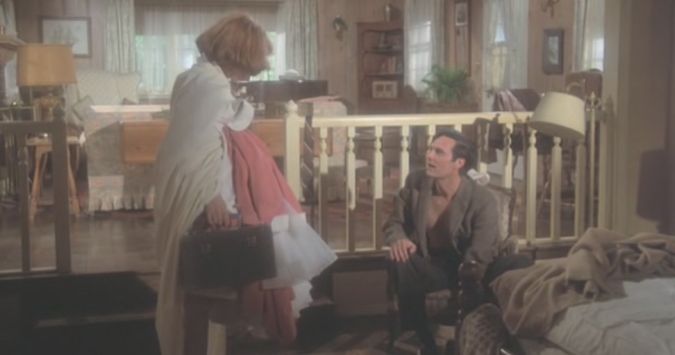 A Vaseline lens was used to depict the 1950s, apparently an era where a light fog infiltrated even the most heavily sealed rooms.
A Vaseline lens was used to depict the 1950s, apparently an era where a light fog infiltrated even the most heavily sealed rooms.
Every five years, a new vignette begins. These chapters are separated by a reprise of the theme song sung by Johnny Mathis and Jane Olivor, “The Last Time I Felt Like This,” accompanied by generic black and white stills of things what done happened in the interim. These montages are interminable but provide accidental hilarity which, as long-time SBBN readers will attest to, is my favorite kind of hilarity. This treacly love song played over pictures of boxers with visible, bleeding wounds on their faces or Khrushchev screaming Cold War threats, and that’s hilarious enough, but I was fond of this picture that is shown in the 1961 intro:
…paired with the lyric “the last time I felt like this, was long before I knew / What I’m feeling now with you.” This accidental juxtaposition — and I assure you I am being completely sincere — is the single most touching moment in the film.
The script is filed with one-liners and set ups leading to anecdotes and quickly devolves into a premise whereby both Doris and George relate one “good” and one “bad” story about their spouses, which in adept hands might end up being funny and touching, but here is just a dull-witted setup to get to the monologues, inevitably filmed over the shoulder and with reaction shots telegraphing the ostensible punchlines.
The bigger problem with the anecdotes about their unseen families is that the people off screen are infinitely more compelling than the two onscreen folks we’re saddled with. George in 1956 tells a story about his teenage son Michael being assigned a “what I did over summer vacation” essay at the beginning of the school year, and thus writing an honest tale of his quest to get laid and the horror of getting erections while on public transportation. It’s a terrific story that leaves the audience wishing so very much that they were watching a film about Michael instead of his weasely little father and the vapid, wig-abusing woman he sleeps with once a year.
Same Time, Next Year very obviously works backwards from individual premises, a conceit that can work in comedy if handled well, but one that has no place in feel-good dramadies. Screenwriter Bernard Slade clearly had a list of cultural milestones from 1951 through 1977 that he wanted to touch on, and knew no other way of approaching these milestones than by setting them up as conflicts of opposites, in a very weakly attended Jungian sense of the phrase.
For instance, when Slade wanted to mine the comedy gold inherent in hippies — they wear fringed shawls and have long hair! Hilarious, amirite? — he turned Doris into an insta-hippie and made George a striped-suit-wearing manifestation of The Man. But this set-up totally needs a twist, right, so George turns out to have a heartbreaking and deeply humanizing reason for being The Man, thus leading to resolution and also sex, which serves as a kind of sub-resolution in this film, though that particular contrivance seems to betray a determined misunderstanding of what sex between committed adults actually is, or at least can be.
The quickie resolution of this particular chapter in STNY undermines any Jungian interpretations Slade was intending. There is a really terrific explanation of this on the Jungian Society of Washington page that explains it in full:
“…words cannot really express that incredible shift of perspective that lets you tolerate something that, twenty-four hours before, was totally intolerable. Somehow you feel better for it, and somehow you feel expanded. There is something in you that has become stronger and has given you the feeling that, if you were able to do that, you can do other things, too. And you can trust yourself and you can rely on yourself, and that is invaluable.”
This is precisely what Slade’s Same Time, Next Year script is aiming for, the idea that each encounter between Doris and George will result in a new level of understanding, love, tolerance and commitment between the lovers, which spills into their everyday lives and makes them whole. The trouble is that each encounter is resolved in the most hackneyed fashion possible. In the case of the 1966 hippie scenario, we discover George turned into Stereotypical Scared Fascist Man because his son was killed in the war. Doris feels pity for him and the main resolution occurs when her tears are shed; sex is had, which is the secondary resolution in each of these set-ups, and now the situation is completely resolved. There is no discussion beyond the revelation, nothing to indicate either have learned a valuable lesson or become stronger, there is merely the assumption that the audience understands Important Feelings have happened, and that’s all they need to know.
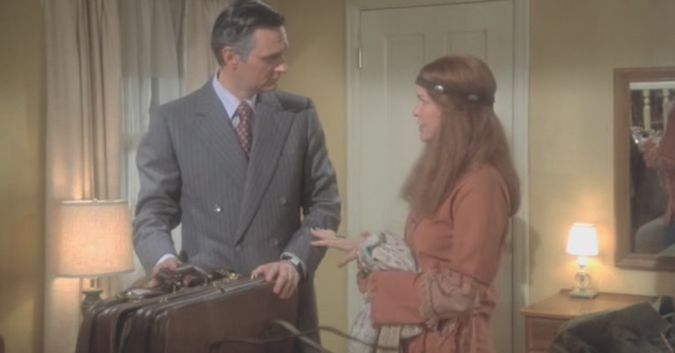 He’s flaky, she’s crunchy; together, they’re cereal.
He’s flaky, she’s crunchy; together, they’re cereal.
It’s telling that Slade’s primary work before STNY was in television sitcoms of the extremely vanilla variety, such as “The Partridge Family” and “The Flying Nun.” As much as I loved “Bewitched,” Slade’s work on it seems to have been on the weaker episodes; let’s just say he apparently never contributed to any subversively feminist or pro-gay storylines. And you can tell, because Slade does his damndest to keep anything even remotely offensive from entering into the film, and rarely takes the opportunity to delve into an issue with more than a surface interest expressed short monologues, pipin’ hot and served up fresh, ready for the nearest high school forensics tournament near you.
To add insult to brain-numbing injury, the film doesn’t even have the goddamned decency to get the fashions right. George’s 1966 The Man suit sports some suspiciously flared hems, which weren’t exactly in at the time. Now, young hipsters in 1966 did occasionally wear a bit of flared hem, but they always fell well above the ankle; George’s pants are dragging the floor. They are unquestionably 1976 pants, and I just cannot deal with a film that can’t properly mimic the fashions of a single decade prior. It’s only been 10 years, just go to your own damn closet or the thrift store down the street, I mean damn.
I know I come off as being totally down with the vintage fashion, yo, but I confess the reason I noticed George’s disco flares was because of a really funny moment in the 1976 Rolling Stone interview with Neil Diamond. He’s being fitted for those Elvis-esque outfits he wore during that nutty Vegas show, and music critic Ben Fong-Torres relates a brief tiff between Diamond and designer Bob Mackie over hem lengths on the bellbottoms.
And thus I reveal that I’d much rather be writing a wacky post on Neil Diamond than wasting my time explaining just how much Same Time, Next Year sucks on toast. But here we are.
The film continues with pretty much every contrivance you can think of, ending in a wild burst of mediocrity involving happy reunions and sunsets. Yet it was nominated for four Oscars, including Best Cinematography, of all things. It couldn’t compete with other films of that year, of course, including a little film called Heaven Can Wait, nominated for nine Academy Awards and winning one. You may have heard of Heaven Can Wait, a movie co-starring (wait for it) Charles Grodin, the actor considered too unknown to be cast in such an important production as Same Time, Next Year.

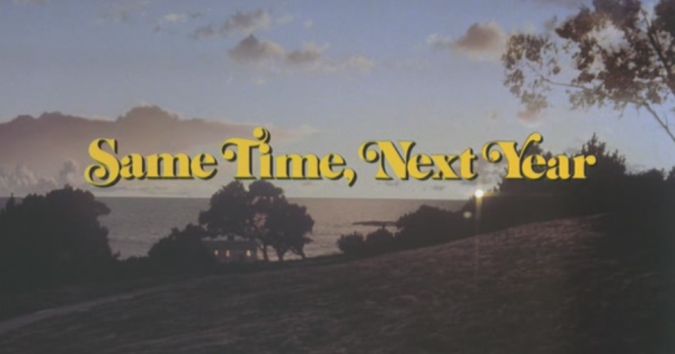
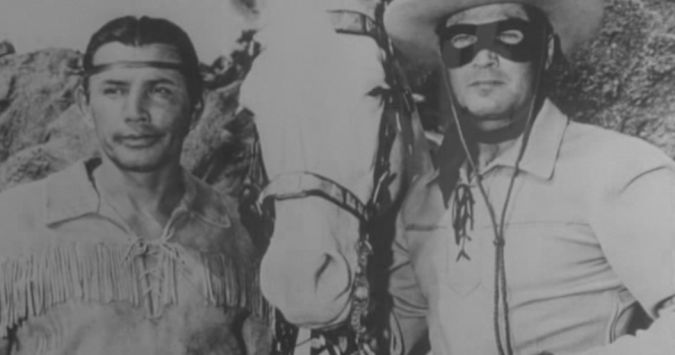
OOOOOH!!!!! I KNOW THIS MOVIE! It was on tv a couple of years back, and I caught a few minutes of it before switching channels. I had no idea it was bad, let alone THIS bad!
Strange that some people wouldn’t like getting a horribly racist film for the White Elephant Blogathon. It is about getting terrible films after all. If I was in, I’d be disappointed if the movie I got didn’t make Erotic Nights of the Living Dead look like Nights of Cabiria.
As a proud M*A*S*H watcher, I know of Alan Alda’s sanctimoneous period well! Even without that period, M*A*S*H* tended to be about as subtle as a gold brick to the head, but with it!… haha!
I was very close to being bored LITERALLY to tears while watching this. It’s not a bad movie in the fun way, but so dull and insipid and thoughtless that it becomes offensive because clearly the filmmakers thought the audience was too delicate to handle anything upsetting. There’s a joke in the play about Trojan condoms that they cut from the film, for example — a mild joke, mind you, but removed because people were concerned that it would upset the audience. Ridiculous.
Is Biuo Omega any good? I’ve heard good things, but I’m not sure.
I liked it, but with reservations, in that it was exceptionally queasy-making. Of course, it’s a Joe D’Amato film so that probably goes without saying. It was interesting and challenging, and I was pleased at some of the subtleties in plot points. But because of the gore and the, er, psychotic Freudian bent of the film, it’s one I wouldn’t recommend without a little bit of a warning.
Much as we love to romanticize the 70s as a golden age of American cinema, the truth is that MOR visual wallpaper like this was just as prevalent back then as it is today. Glad I didn’t end up with this one myself.
I think 70s cinema has gotten quite a bit of a reputation boost over the years. When I first really started getting into film in the mid 1990s, people in the groups I frequented had little regard for 70s cinema. Since most 70s cinema I saw was this exact sort of film, I was right there with them. It took a long time for me to change my opinion and give the 1970s a chance, and I’m glad I did, though the drudgery of STNY has set the cause back a bit.
Okay, Stacia, it’s confession time. I did this to you. I remember this movie precisely as you report it– the smeary cinematography, Alan Alda’s absolutely awful breakdown over his son, Ellen Burstyn’s smug transformation from twerp to Jane Fionda-esque consciousness-raised stand-in for a generation of repressed women. Yeesh. Incredibly, the damn thing was directed by Robert Mulligan who, I had to keep reminding myself, had more than one decent movie to his credit over his career. My punishment for inflicting this one you? There’s a certain tune now burrowing its way into my head that I thought I’d flushed 30 years ago…
The last time I felt like this/I was falling in love…
MAKE IT STOP!!!!! MAKE IT STOP!!!!
WHY YOU I OUGHTA
See, I know we go into the ‘thon risking that we will be given a horrible movie. This just happened to be the exact kind of horrible movie I can barely stand.
The antidote for Johnny Mathis is to watch Manhunter and get some Iron Butterfly stuck in your head instead. I know whereof I speak.
I remember seeing this on cable back in the dim early days of HBO. This is the kind of movie that would be greatly improved by ninjas, I think, or perhaps by the war host of Rohan charging in and killing everyone. But, alas, no…
Giant.
Mechanical.
Spiders.
So, I was wondering: if you were forced to watch this or The Boatniks over again, which would you choose?
NNNNNOOOOOOOOOOOOOOOOOO
Boatniks. I mean, c’mon man. Wally Cox.
I say this with all sincerity: I love this movie, with certain reservations. Mainly, the ending, which is too good to be true; I haven’t seen Slade’s play, but I’ve heard the ending is more tragic and I trust it plays better onstage. I don’t buy the way the film ends, since it kind of leaves you hanging. I do want Doris and George to be happy, but somehow it’s not as satisfying as it should be that they simply agree to keep seeing each other once a year, like they always have. It seems like they’ve gotten too old for that. By this point, they should either go all the way or go home.
Be that as it way, I think the rest of the movie is pretty fantastic. I don’t know whether Charles Grodin would’ve been a better George, and am curious why he wasn’t cast, but I think Alda is fine. Burstyn talks in her biography about how disappointed she was that Grodin wasn’t cast, but that after she was stuck with Alda, she warmed up to him, and they spent days alone getting drunk in order to connect. I think their chemistry is very palpable.
I must be alone in that I love Robert Surtees’ Oscar-nominated cinematography. It makes you feel like you’re really there, in that inn on the sea. Like the other films he shot for Robert Mulligan, Summer of ’42 and The Other, he makes it all look so dreamlike and nostalgic. More than anything, the films are time capsules. Summer of ’42 and The Other takes you back to the 30’s and 40’s, and this film takes you back to the 50’s and beyond — although, it’s true, Alda and Burstyn’s aging makeup is not always convincing.
You can probably tell that I’m a huge fan of Robert Mulligan. For a Mulligan fan, this film is bliss. He directs Alda and Burstyn so crisply that you don’t notice his direction at all. Surtees’ camera is always where it needs to be.
It’s a typical Mulligan film, too, in the way he examines parental relationships. George and his son Michael have a tortured relationship that’s just the opposite of Atticus Finch and Scout. I find George’s story about Michael’s death in Vietnam to be very harrowing.
I don’t necessarily believe Doris comforts George with sex afterwards, either. We only see them hugging tearfully. True, the purpose of George’s visit is sex, but unlike in the previous episodes, Mulligan doesn’t end with that implication. This particular episode seems to end on a time for mourning.
Mulligan’s direction of the two actors is so concise that when they talk about their spouses, Helen and Harry, they seem like real people. We see them in our heads. I love how they come to adore each other’s spouses as well. George saves Doris and Harry’s marriage with a single phonecall. And when Helen dies, Doris feels it’s as if she’s lost her best friend.
This would’ve been Mulligan’s last top-notch film, had he not topped it a decade later with his swan song, 1991’s The Man in the Moon.
Woah, how did I miss this comment? Adam, I’m so sorry, I didn’t mean to neglect you!
George’s phone conversation with Harry was… well, I’m still pretty angry at this film so I won’t say good, but the punchline was terrific, I admit that. And you’re absolutely right in that we see the family members as fully-drawn characters even if we never hear or see them, which is why I, in part, wished we were seeing a film about them instead of about these two.
I don’t like this film but I am REALLY glad someone showed up to defend it, honestly, and I’m especially glad it was you. Your commentary on 70s films has always been terrific — thanks for stopping by!
I needed to edit this post to make it work with a blog widget, so I took the opening paragraph about the White Elephant Blogathon behind-the-scenes shenanigans out, but will preserve it here for posterity:
Long-time SBBN readers (all three of you) might remember the issues I had with the White Elephant Blogathon in past years, primarily the random Penthouse-style nudes used by a blogger to review a film I submitted a few years ago, plus being scolded for the racist film I submitted last year. It was indeed a racist film, and I submitted it because (a) other racist (and sexist, fascist, homophobic, etc.) films had been submitted in prior years, (b) I was genuinely curious as to what another blogger/critic would make of the film, and (c) the whole point of the ‘thon is to submit shit films, and you can’t get much shittier than a racist comedy. That was my theory, anyway. All that said, if I’d realized people were “disturbed” that films like Triumph of the Will had been submitted previously, and if I had seen them call the person who submitted it a “sicko,” I would have avoided the controversial choice I made last year. I used to go into these ‘thons thinking, hey, you want to throw down with Buio Omega, go right ahead, pal, you don’t scare me. I was apparently the only one; I get that and have adjusted my expectations and behavior accordingly.